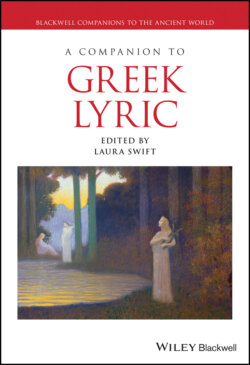Читать книгу A Companion to Greek Lyric - Группа авторов - Страница 74
The Editorial Process
ОглавлениеThe editor’s most important tasks—namely, the production of an accurate transcription (i.e., “good readings”), as well as attributing the work to a particular poet—are the basis for all further research. But fulfilling these responsibilities depends on further wide-ranging, synthesizing analyses, including of dialect (de Kreij, this volume), of meter (Battezzato 2009; D’Angour, this volume), of palaeography, of diction, and of physical layout. The last can be particularly challenging: a group of small fragments is like a jigsaw puzzle, but with papyri there are inevitably missing or otherwise ill-fitting pieces! (Figure 7.2) In general, the larger the scrap(s) and the more extensive the amount of text available for analysis, the more richly it can be understood.
Figure 7.2 P.Oxy. 25.2430; fragments of Simonides (= fr. 519). (Courtesy of The Egypt Exploration Society and the University of Oxford Imaging Papyri Project.)
The order in which various aspects of the process are presented below in no way reflects a standardized technique: every papyrus is unique, and yields insights on its own terms as its readings are confirmed and its text stabilized. A papyrologist invariably wears many hats in the course of completing the job (Youtie 1963; Turner 1968: 54–73), but all responsible editions will include some combination of the following.
